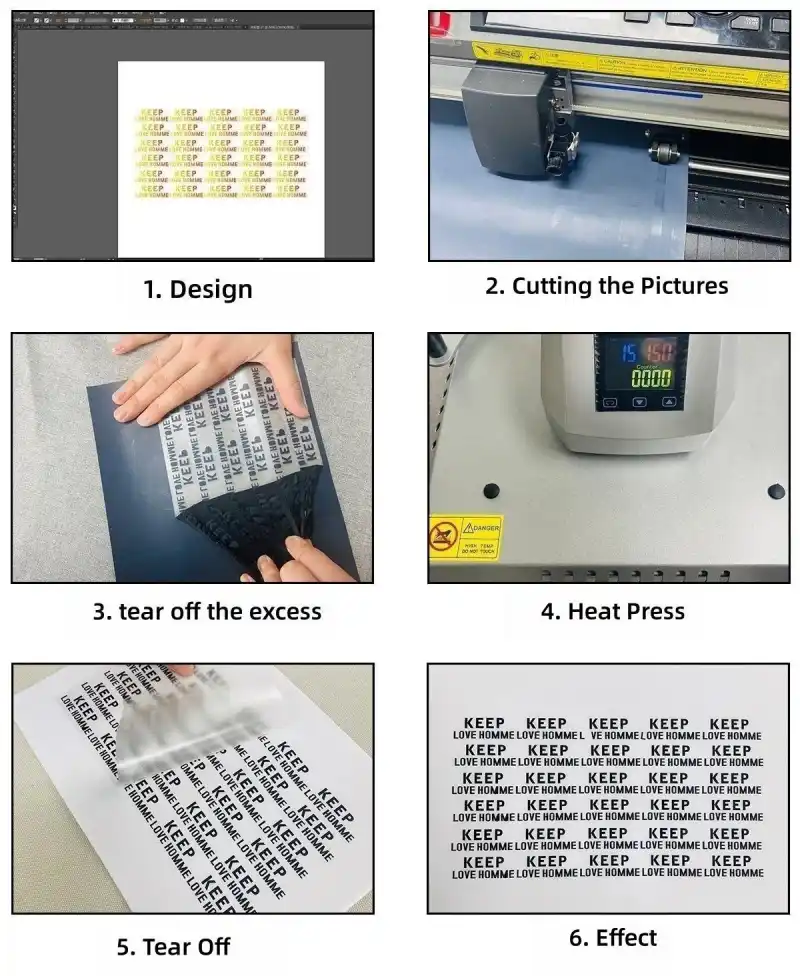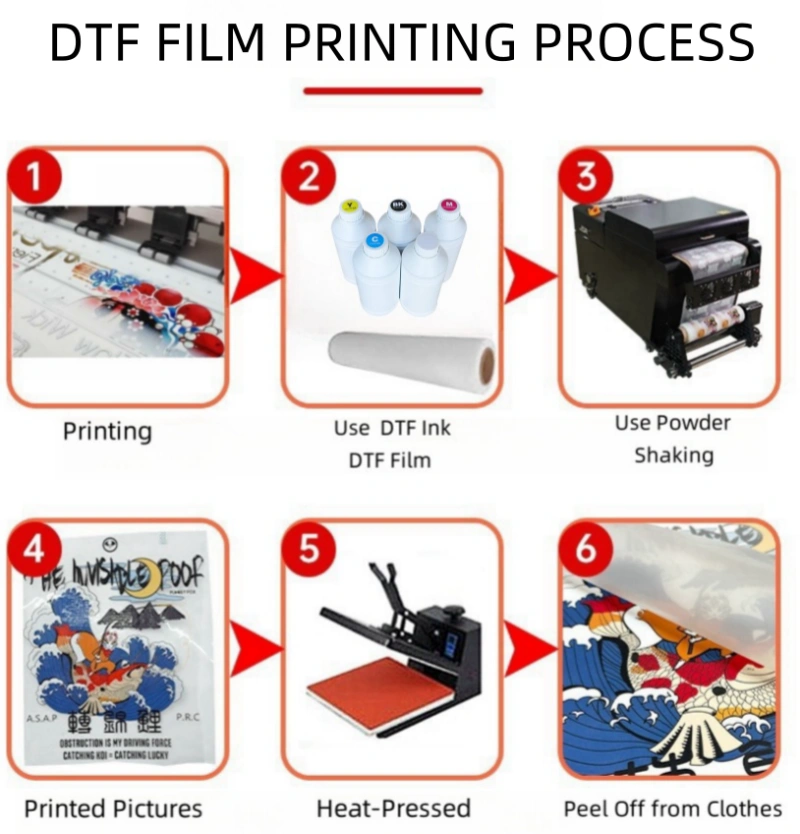What are the differences between heat transfer PET dtf film and htv heat transfer vinyl
Heat Transfer Vinyl (HTV) and Direct-to-Film (DTF) are two popular methods used in the world of the garments industry, each offering unique characteristics and applications.
Heat Transfer Vinyl, often referred to as iron-on vinyl or HTV is a thin, flexible material with an adhesive backing. It comes in sheets or rolls and is commonly used for creating custom designs on fabrics such as T-shirts, hoodies, hats, and bags. The application process involves cutting the vinyl into the desired design using a plotter a cutting machine or a laser marking machine, weeding out the excess material, and then heat-pressing the remaining design onto the fabric. HTV is available in a variety of colors and finishes, including matte, glossy, puff, Chameleon Reflective Heat Transfer Vinyl, Glitter Heat Transfer Vinyl, and so on.
|
On the other hand, Direct-to-Film (DTF) is a relatively newer technology that involves printing designs directly onto a special film using a DTF printer. The Heat Transfer DTF Film has a layer of adhesive that allows it to stick to the fabric when heat is applied. The process begins with printing the design onto the DTF film, which is then transferred onto the fabric using a heat press. DTF allows for full-color and detailed designs without the need for cutting and weeding, making it a more efficient option for intricate graphics.
|
While both methods result in durable designs, there are some key differences. HTV is known for its simplicity and is preferred for small-scale projects or when a textured finish is desired. On the other hand, DTF is gaining popularity for its ability to reproduce complex, full-color designs with ease, making it suitable for larger-scale and highly detailed applications.
Heat Transfer Vinyl is a traditional method that involves cutting and pressing vinyl sheets onto fabric, while Direct-to-Film is a modern technology that enables full-color printing on a special film, which is then heat-pressed onto the fabric. The choice between the two depends on the specific requirements of the project, considering factors such as design complexity, scale, and desired finish.
In summary, heat transfer vinyl is suitable for small-scale projects with a simple design and is economical and affordable. DTF film is suitable for big-scale projects and design complexity projects.


